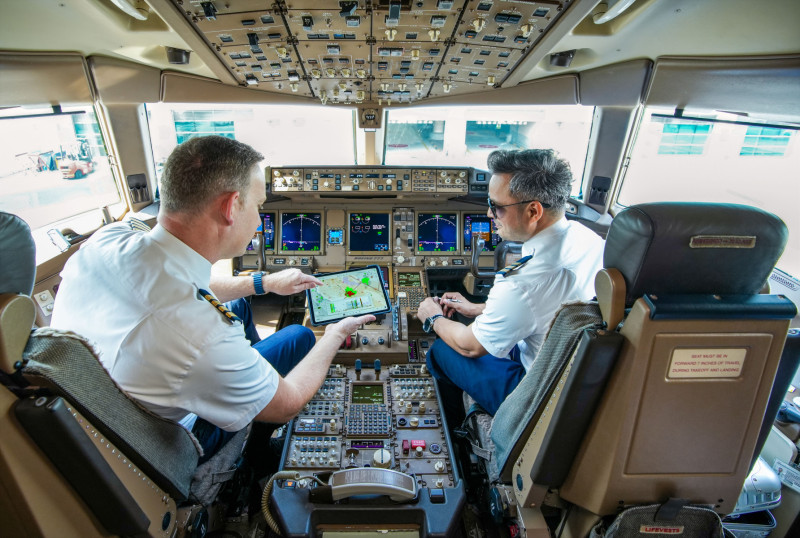
Emirates joins IATA’s Turbulence Aware Platform, becomes first airline to integrate flight data for real-time accuracy with Lido mPilot from Lufthansa Systems
The Voice of Chandigarh :
Emirates has joined the International Air Transport Association’s (IATA) Turbulence Aware Platform. It will also be the first airline to integrate the IATA platform within the latest version of Lido mPilot, the mobile navigation solution from Lufthansa Systems.

Bringing these platforms together offers a wealth of data, combined with new technologies that make up-to-the-minute, highly accurate turbulence information and forecasts available for pilots, equipping them with the means to plot the best paths around affected areas for enhanced safety, efficient navigation, and optimisation of flight plans.

In conjunction with the IATA Turbulence Aware Platform, the airline has equipped more than 140 aircraft with the required onboard software to automatically share turbulence reports with all airlines contributing data to the platform. All new aircraft joining the Emirates fleet over the course of the next few years, such as the Airbus A350 and Boeing 777-9, 777-8 and B787, will be enabled to participate in the programme.
Captain Hassan Alhammadi, Divisional Senior Vice President, Flight Operations Emirates Airline said: “Actively participating in IATA’s Turbulence Aware platform and equipping our pilots with a complement of the latest industry technologies such as the mobile navigation solution Lido mPilot from Lufthansa Systems are part of our commitment to ensure operational safety, efficiency, and customer comfort on every flight. We’re also proud to contribute data around turbulence through our Middle East network and extensive links across Africa, Asia, Australia, and other regions. It will help build sophisticated industry knowledge to effectively manage turbulence and evolving weather patterns with even more precision. This is only the beginning, and we are progressing with plans to integrate more cutting-edge technologies to elevate the flying experience even further, so our customers can enjoy smoother journeys.”

“Mitigating the adverse effects of turbulence is an industry wide challenge and obtaining accurate and live data is key in this endeavour. The cooperation between IATA Turbulence Aware, Emirates and Lufthansa Systems will further improve the quality and quantity of real time data made available to the industry, allowing for smoother and safer air travel for all,” said Frederic Leger, IATA’s Senior Vice President Commercial Products and Services.
“IATA Turbulence Aware data enhances the value of Lido mPilot by providing pilots with real-time, accurate and comprehensive information on turbulence, enabling them to make informed decisions and navigate more efficiently. By integrating this data into Lido mPilot, Emirates Airline can increase safety, reduce fuel consumption and minimize passenger discomfort, ultimately improving their operational efficiency and customer satisfaction,” said Andreas Medlhammer, Product Owner Pilot Charting Apps at Lufthansa Systems.

IATA’s Turbulence Aware is a global, real-time detailed and objective information resource for pilots and aviation professionals to manage and mitigate the impact of turbulence on operations. Turbulence is the main cause of passenger and crew injuries and leads to higher fuel usage. The platform pools anonymized turbulence data from thousands of flights operated around the world. The information generated from this data enables pilots and dispatchers to choose optimal flight paths, avoiding turbulence and flying at peak levels and altitudes to maximize fuel efficiency, ultimately reducing carbon emissions. Till date, Turbulence Aware ensured a safer flight for over 700 million passengers, a number that will continue to rise as new airlines join the program.
Lido mPilot is an all-in-one mobile navigational charting application from Lufthansa Systems and has been configured based on Emirates’ specific operational requirements. Lido mPilot provides pilots with easy access to terminal charts, a dynamically generated enroute map, and an Airport Moving Map (AMM). Its data-driven, interactive maps, and the latest weather features relevant to each flight being operated ensure enhanced situational awareness and the most pertinent information for pilots.
